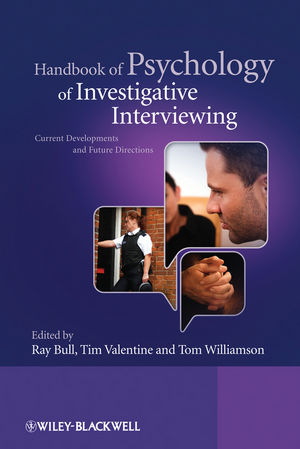Handbook of Psychology of Investigative Interviewing: Current Developments and Future DirectionsISBN: 978-0-470-51267-8
Hardcover
360 pages
September 2009, Wiley-Blackwell
 This is a Print-on-Demand title. It will be printed specifically to fill your order. Please allow an additional 10-15 days delivery time. The book is not returnable.
Other Available Formats: Paperback
|
||||||
Ray Bull is Professor of Forensic Psychology at the
University of Leicester. He has advised a large number of police
forces in several countries on the interviewing of witnesses and
suspects, and has testified as an expert witness in a number of
trials. He was part of the small team commissioned by the Home
Office to write the 2002 Government document Achieving Best
Evidence in Criminal Proceedings: Guidance for Vulnerable or
Intimidated Witnesses, Including Children (ABE). In April 2009,
Professor Bull received the Senior Academic Award from the
International Investigative Interviewing Research Group for his
significant lifetime contribution to the field of investigative
interviewing.
Tim Valentine was appointed to a Chair of Psychology at Goldsmiths, University of London in 1997. He has more than 25 years’ research experience in theoretical and applied aspects of human face recognition. He has authored more than 70 scientific articles and presented research papers in Australia, Canada, Europe, New Zealand and USA. He has worked as an expert witness since 1999 advising in criminal cases of disputed identification.
Tom Williamson was a highly experienced police officer who swiftly rose through the ranks while completing a Bachelor degree, followed by a PhD. He was the major driving force in the shift from ‘interrogation’ to ‘investigative interviewing’ in police interviewing.



